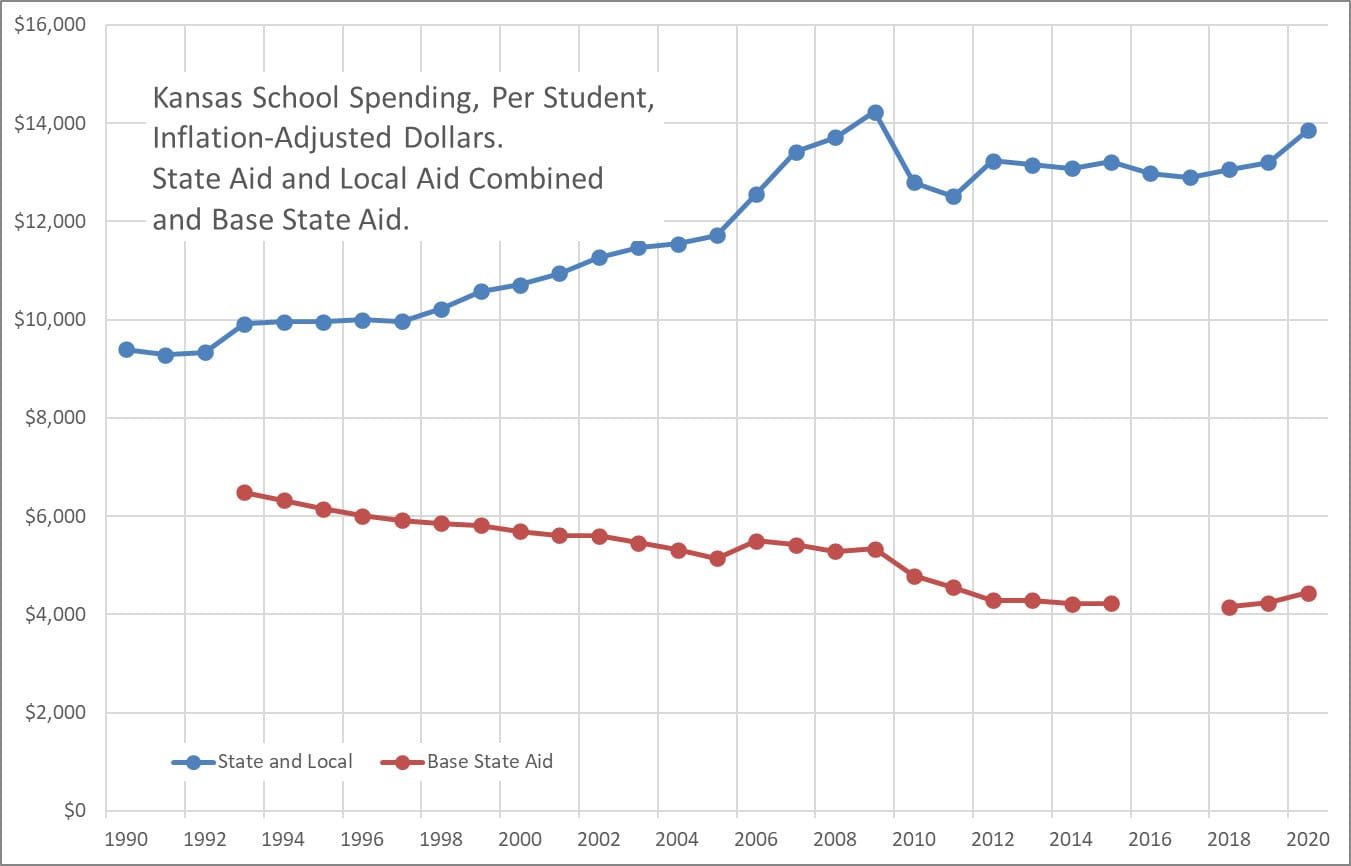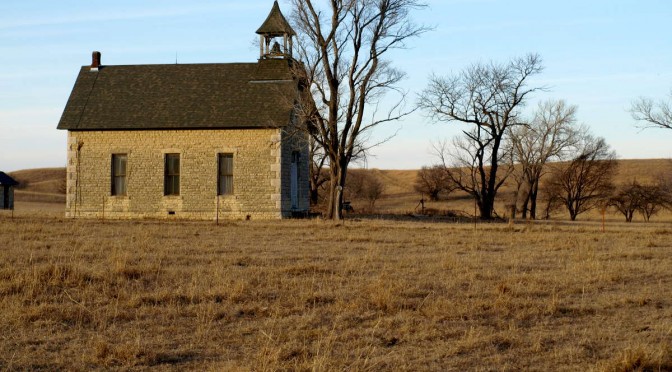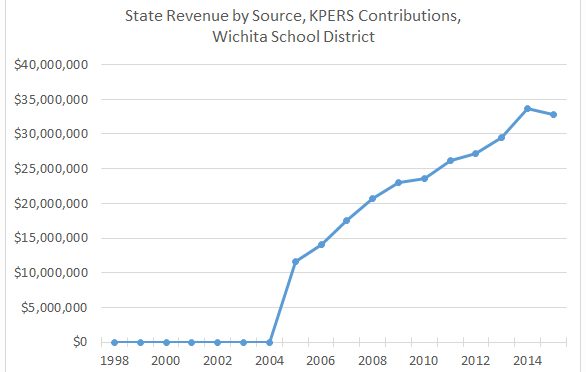Tag: Kansas State Board of Education
-

Kansas school spending, through 2020
Charts of Kansas school spending presented in different forms.
-

Kansas school spending, through 2018
Charts of Kansas school spending presented in different forms.
-

Dale Dennis, sage of Kansas school finance?
Is the state’s leading expert on school funding truly knowledgeable, or is he untrustworthy?
-

Kansas state school assessments
An interactive presentation of Kansas state school assessment scores at the state, district, and building levels.
-

Public education factbook for 2017
The fifth edition of data on public schools in Kansas is available.
-

Accountability in Kansas public schools
Critics of school choice say there is no accountability outside the traditional public schools. Here are the standards Kansas used to hold its schools accountable.
-

Year in Review: 2016
Here are highlights from Voice for Liberty for 2016. Was it a good year for the principles of individual liberty, limited government, economic freedom, and free markets in Wichita and Kansas?
-

Decoding the Kansas teachers union
Decoding and deconstructing communications from KNEA, the Kansas teachers union, lets us discover the true purpose of the union.
-

Public school experts
Do only those within the Kansas public schooling community have a say?
-

VIDEO: KPERS payments and Kansas schools
There is a claim that a recent change in the handling of KPERS payments falsely inflates school spending. The Kansas State Department of Education says otherwise.
-

David Dennis, gleeful regulatory revisionist
David Dennis, candidate for Sedgwick County Commission, rewrites his history of service on the Kansas State Board of Education.
-

KPERS payments and Kansas schools
There is a claim that a recent change in the handling of KPERS payments falsely inflates school spending. The Kansas State Department of Education says otherwise.